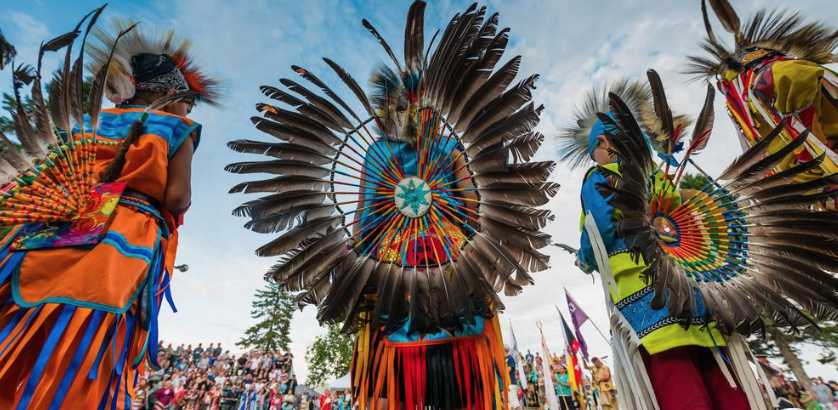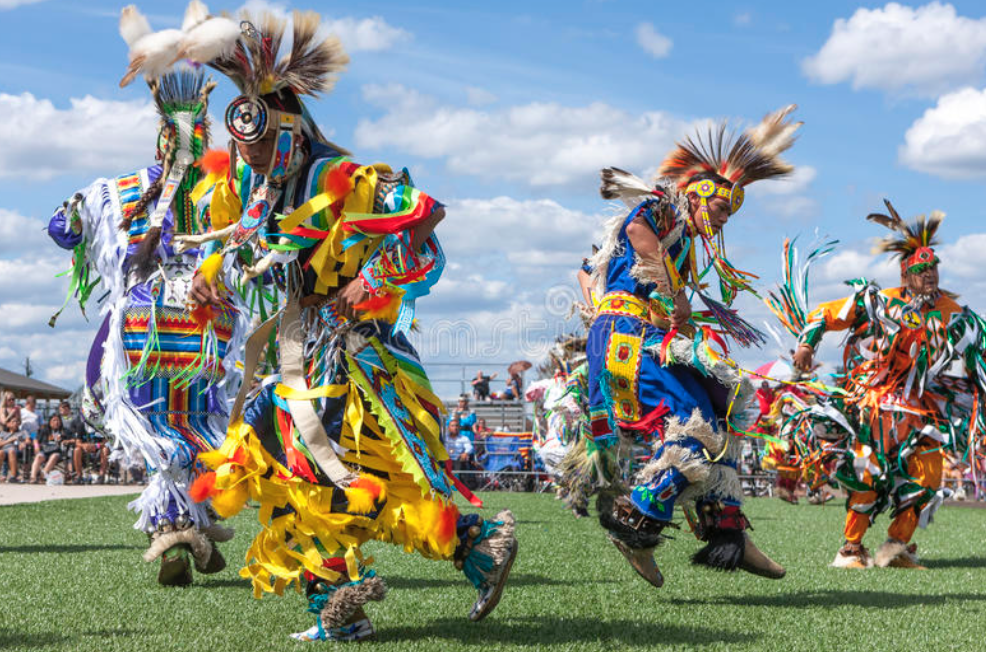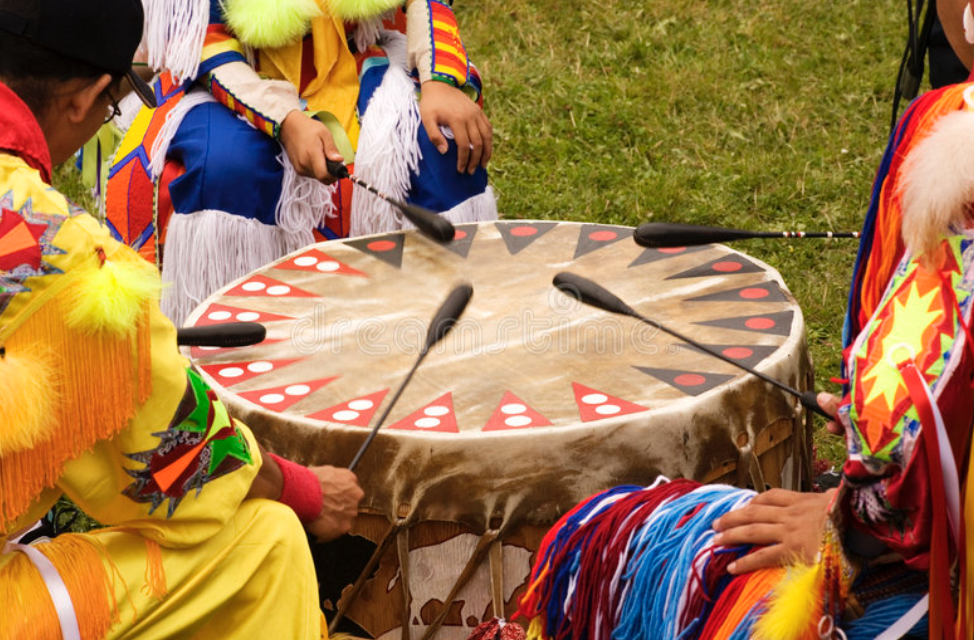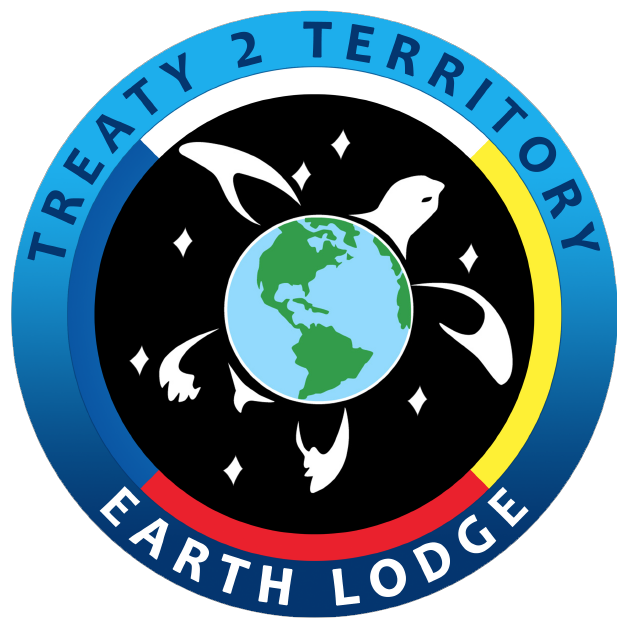Treaty 2 Territory- Pow Wow time is the our Nations’ way of meeting together, to join in dancing, singing, visiting, renewing old friendships, making new ones and most importantly celebrating and honouring traditions.
Essential to a pow wow are the dancers and the singers. The songs of the “Big Drum” are sung by the men who sit around it, and at times with women who sing behind the men. The beating sound made by the Drum is often said to be the heartbeat of Mother Earth. Each song is begun by the Lead Singer who is often the main carrier of many songs. Those are the songs that have been learned throughout the years and passed down from generations.
Dancing has always been a very important part of the life for Indigenous peoples. Most dances seen at Pow Wows today are social dances which might have had different meanings in earlier days. Although dance styles have evolved and content has changed, their meaning and importance has not. The regalia worn by the dancers – like the styles of clothing today, transforms over time – showcases a vibrant and changing way of life. At the pow wow, the announcers run the events. The announcers work with the arena director to keep the pow wow organized and running smoothly. These individuals along with the committee work hard to bring the people together to dance and fellowship together in the circle.

ETIQUETTE: Ask permission before taking pictures of dancers. Many people are sensitive about pictures, so it is always good to be on the safe side and ask. Do not touch eagle feathers or other items without asking permission. Always stand during special songs. This includes Grand Entry, Flag Songs, Veteran Songs, Memorial Songs, Prayer Songs, and any song the announcer designates. It is also customary to remove any hats that you have on for the duration of that song. Pay attention to the announcers, they will give all the information you need, as well as entertain you and keep you posted on news. Any questions you have can be answered by them. Remember you are a guest Have fun, ask questions, and meet people. Everyone is welcome!

WHAT IS A GRAND ENTRY?
The Grand Entry has always been part of pow wow protocol. Usually, the host drum is asked to sing the Grand Entry song. The arena director will organize and coordinate the staffs, flags, dignitaries, royalty, and dancers. An elder who has been pre-selected will share an invocation/prayer to bless the day.
Grand Entry Order: (usually dance 4 to a row)
- The eagle staffs/flags are danced in by a visiting dancer in front of the line. Each staff represents a nation, organization, or family.
- Dignitaries will follow the eagle staffs/flags: dignitaries-chiefs, sponsors, committee, honourees’ Visiting royalty i.e., visiting princess’ and braves who represent their communities, festivals or pow wows
Dance Order: Men’s traditional dancers, prairie chicken dancers, grass dancers, fancy bustle dancers, Women’s traditional dancers, jingle dress dancers, fancy shawl dancers, followed by teens, juniors, and tiny-tot dancers

POW WOW DO’S AND DON’TS….
We invite you all to witness these artistic and creative celebrations of our culture. Everyone is welcome to come and enjoy our traditional food and famous Indigenous hospitality. Watch the vibrant, spinning colours of the ceremonial regalia as you tap your feet to the beat of powerful drums and forge new friendships among the many smiling faces in the crowd.
- Be on time: Pow Wows run on a tight schedule, so be on time to events to avoid missing important moments.
- Dress appropriately: To remain respectful of the culture and ceremony, make sure to dress modestly. If the weather is hot, a t-shirt and shorts are okay.
- Respect the Opening Prayer: The Grand Entry and the Opening Prayer signal the beginning of the Pow Wow. The Opening Prayer is always performed by an Elder, and the drum takes center stage as the most important part.
- Ask before taking photos: There are some times during the Pow Wow that shouldn’t be photographed, such as ceremonies and prayers. Ask permission before snapping.
- Do not bring drugs or alcohol: A Pow Wow is a cultural event, not a party. Alcohol, drugs and firearms are never allowed on the premises. Drugs and alcohol are not part of the culture.
- Pay attention to announcers: The Master of Ceremonies will be talking throughout the event, so make sure to listen for when to sit, when to stand, and when to join in the dance!
- Know the differences between Pow Wows: Some Pow Wows are traditional ceremonies, while others are competitive.
- Don’t be afraid to ask questions: A Pow Wow is a spiritual experience for those performing, but you may not fully understand what’s going on if you’re new to these events. If you have any questions, just ask!
- Don’t forget your tobacco: Offering tobacco to an Elder or dancer before a question is a sign of tremendous respect.
- Browse the local vendors: When you’re buying from the artisans, you’re supporting Indigenous families and their communities.
- Kids are welcome: Pow Wows are community and family events, so they’re a great place to bring children to introduce them to Indigenous culture.
- We call the dancers’ clothing ‘regalia’, not a costume: A dancer’s regalia is how they dress their spirit. It’s a special piece of handmade clothing that holds spiritual significance to the dancer and is adorned with beading that has taken many hours (or even years) to assemble. Be respectful and always ask before taking photos or touching!
- Recognize different traditions: Traditions change from nation to nation. Sometimes, a local nation holds a cultural expo of their specific traditions — such as a sacred fire — or different dances that are specific to that region, like the smoke dance, grass dance or jingle dance. Embrace the diversity!
Source: Canadianpowwows.ca
Submitted by Renée McGurry; Earth Lodge Development
